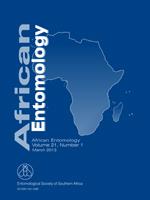Most ponerine ants have colonies with up to a few hundreds of workers, but there has been sporadic evolution of species with more populous colonies. Forty two nests of Paltothyreus tarsatus were excavated from three distinct habitats in the Ivory Coast. Colonies were monogynous in Comoé (forest and savanna), but polygynous in Taï (rainforest). Mean colony size was 1576 ± 1543 workers, with the biggest colonies (exceeding 5000 adults) restricted to forest. Hundreds of sexuals occurred in many nests. Unlike males, young queens stay in the nests at least six months before the mating flight, presumably to accumulate fat reserves. This together with high absolute numbers of gynes and their large size relative to workers, amounts to a striking reproductive investment. We discuss this investment in the context of non-claustral independent colony foundation. Mating was observed in large male aggregations, unlike in South Africa where queens mate near the natal nests.
BioOne.org will be down briefly for maintenance on 17 December 2024 between 18:00-22:00 Pacific Time US. We apologize for any inconvenience.
How to translate text using browser tools
1 March 2013
Large Colonies and Striking Sexual investment in the African Stink Ant, Paltothyreus tarsatus (Subfamily Ponerinae)
C. Peeters,
U. Braun,
B. Hölldobler
ACCESS THE FULL ARTICLE
It is not available for individual sale.
This article is only available to subscribers.
It is not available for individual sale.
It is not available for individual sale.

African Entomology
Vol. 21 • No. 1
March 2013
Vol. 21 • No. 1
March 2013
independent colony foundation
mating
monogyny
non-claustral
reproduction




